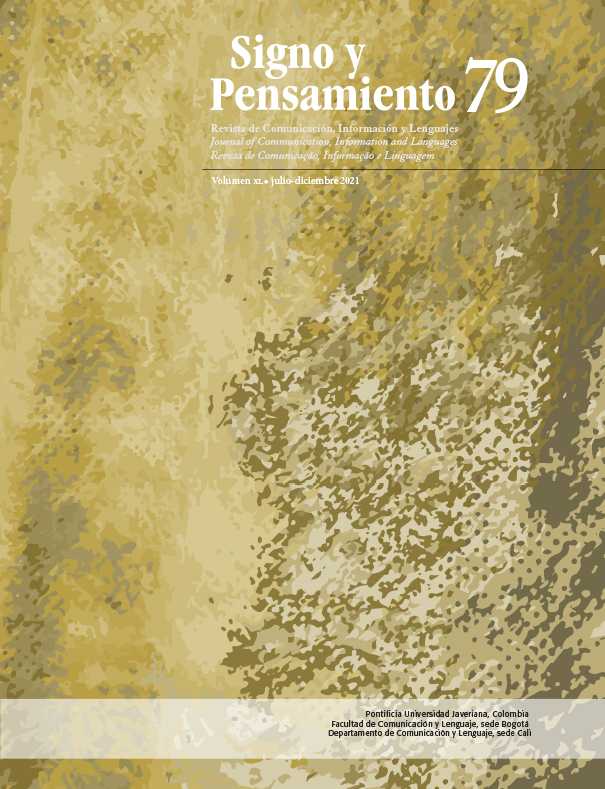Abstract
To understand what is referred to when talking about the public, it is essential to study two topics: the meaning of the public and the publicity of things. From the differentiated and articulated analysis of both topics, this text intends to reflect on the construction of this transversal category of the social sciences. Therefore, in the first part, some considerations will be provided on the definition of this adjective, and, secondly, some methodological precisions will be made to research on the publicity of any issue. On the other hand, in the polysemy of this adjective lies the main difficulty in approaching the first of them, the multiple attributions that subjects and relationships can confer simultaneously to the same thing complicate any investigation of the second one.
Abaca Sánchez, F. (2017). Aproximaciones a una salida a la distinción espacio público y privado. Una pregunta por un Otro Espacio. Revista Nomadías, 23, 127-142. https://doi.org/10.5354/0719-0905.2017.47339
Arellano Gault, D., y Blanco, F. (2020). Políticas públicas y democracia. Instituto Nacional Electoral.
Bobbio, N. (1985). Estado, gobierno y sociedad. Por una teoría general de la política (1.. ed.). Fondo de Cultura Económica.
Botero Montoya, L. H. (2011). Teoría de públicos. Sello Editorial.
Bourdieu, P. (1997). Razones prácticas sobre la teoria de la acción. Anagrama.
Commelerán y Gómez, F. A. (1912). Diccionario clásico-etimológico latino-español (2.. ed.). Imprenta de Perlado, Páez y Cia.
Fernández Sebastián, J., y Fuentes Aragonés, J. F. (2002). Diccionario político y social del siglo XIX español. Alianza.
FOIA Improvement Act of 2016. To improve the Freedom of Information Act. 30 de junio de 2016. Public Law No.114-185. https://www.congress.gov/114/bills/s337/BILLS-114s337enr.xml
Gómez, A. C. (2015). Genealogía del derecho de acceso a la información pública en Colombia (Tesis de pregrado). Facultad de Comunicación y Lenguaje, Pontificia Universidad Javeriana, Bogotá.
Habermas, J. (2009). Historia y crítica de la opínión pública. La transformación estructural de la vida pública. (1.. ed.). Gustavo Gili.
Mankiw, N. G. (2017). Principios de economía (M. del P. Carril Villarreal, Trad.) (7.. ed.). Cengage Learning Editores.
Marsá Gómez, F. (1992). Diccionario Planeta de la lengua española usual. Planeta.
Moliner, M. (1982). Diccionario de uso del español (Vol. 2). Gredos.
Naranjo Mesa, V. (2000). Teoría constitucional e instituciones políticas (8.. ed.). Temis.
Planeta. (1993). Diccionario de sinónimos y antónimos y sinónimos en inglés. Autor.
Prelot, M. (1963). La science politique. Presses Universitaires de France.
Prolibros. (1993). Thema A-Z (Vol. 4, 3.. ed.). Autor.
Rabotnikof, N. (1993). Lo público y sus problemas: notas para una reconsideración. Revista Internacional de Filosofia Política, 2, 75-98. http://e-spacio.uned.es/fez/eserv/bibliuned:filopoli-1993-2-C04E1B1F-B9D9-F0CB-DF7D-185DF6E5C990/publico_problemas.pdf
Real Academia Española. (1737). Diccionario de Autoridades (1726-1739), (Vol. 5). Autor. https://apps2.rae.es/DA.html
Real Academia Española. (2014). Diccionario de la lengua española (23.. ed.). Autor.
Rodríguez Zepeda, J. (2008). Estado y transparencia: un paseo por la filosofia política (5.. ed.). Instituto Federal de Acceso a la Información Publica.
Rodríguez, E. (2016, 30 de diciembre). Diferencia entre denotación y connotación. http://www.unprofesor.com/lengua-espanola/diferencia-entre-denotacion-y-connotacion-238.html
Saura Fructuoso, C. (2015). Análisis general de las técnicas de intervención del Estado en la economía. Revista Digital de Derecho Administrativo, 14, 27-43. https://doi.org/10.18601/21452946.n14.04
Schedler, A. (2008). ¿Qué es la rendición de cuentas? (6.. ed.). Instituto Federal de Acceso a la Información Pública.

This work is licensed under a Creative Commons Attribution 4.0 International License.
Copyright (c) 2022 Andrés Camilo Gómez Calcetero


